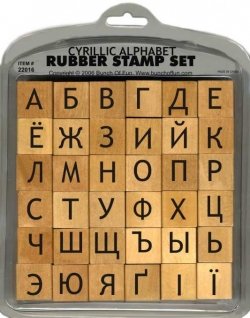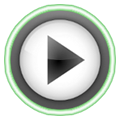
Alphabets (and syllabaries) are the first barrier of entry to any new language. If you want to learn a language like Russian, you’re basically paralyzed until you’re familiar with its letters. But even if you’re learning a language with familiar characters, like Italian, you’re going to feel uncomfortable and wobbly at first; those familiar characters aren’t particularly familiar in words like “zaino” (pronounced dzaino), “gli” (pronounced ʎi) or “cena” (pronounced tʃena).
I’ve always liked learning alphabets; while I don’t know more than 10 words of Hebrew, my seven years of Hebrew school did leave me with a decent ability to read the Hebrew alphabet. Yay. I had a similar experience in Russian back in high school. For me, alphabets seem to stick in my brain when nothing else will.
But if learning a new alphabet doesn’t sound like a fun way to spend your weekend, what can you do? This article is about one simple idea: How to learn the alphabet in any language quickly, and how to remember it for good.
Naturally, we’ll use Anki. At least until we have computer-brain interfaces, there’s no more efficient way to memorize information. So I’ll show you two basic flashcard designs that work together to teach you an alphabet or syllabary.
Alphabets vs Syllabaries vs Logograms: There are three basic types of writing systems: alphabets, syllabaries and logograms. Theoretically, an alphabet should connect individual sounds (phonemes) to letters, so B might be pronounced “b” and A might be pronounced “ah,” and if you stick them together (BA), you get “Bah.” This sort of falls apart when you look at a French word like “haies” (pronounced “eh”), but that’s at least the basic idea. In a syllabary, you’ll use one character to represent a whole syllable: For example, バ is “bah” in Japanese and Ꮿ is “wa” in Cherokee. Syllabaries tend to behave a little better than alphabets, in terms of actually making the sounds they’re supposed to make. Last, logograms (nowadays only found in the Chinese characters than you’ll see in many Asian languages) are when characters represent words (or parts of words), rather than sounds. That’s the idea, anyway, though most Chinese characters really do tell you a fair bit about the sounds they make. In this post. we’re going to focus on alphabets and syllabaries.
Not every language is the same. Some, like Italian, are relatively friendly; if you know how to pronounce a word, you know how to spell it, and vice versa. Some, like English, follow lots of seemingly random rules with lots of exceptions, and some, like French, follow (a large number of) relatively strict rules with few exceptions.
But all languages (even English) follow some patterns, and you can use these patterns to learn the basic spelling system of your new language. Basically, you’re just going to learn a bunch of letter/sound combinations – gn as in gnocchi, gl as in maglietta – until you feel comfortable.
Here’s the first card:
I’m consciously choosing an example word that lends itself to pictures for two reasons. One, it makes the letter/sound combination much more memorable, and two, it means I don’t even need the translation (“smile”), which gives me warm fuzzies inside.
This kind of design also lets you sidestep one of the trickiest problems of pronunciation: the lack of resources. Usually, you’re going to have a hard time finding recordings of each sound in your target language. This isn’t just bad luck; it’s hard to record every sound in a language. For instance, in English, it takes practice to accurately pronounce the “u” in “put” without a “p” or a “t.” So even if you can find a recording of every sound in your new alphabet, it might not be particularly accurate, unless you’re listening to recordings done by a professional (and the only “professionals” in the field of Saying the “U” in “Put” Without a “P” or a “T” are singers and possibly speech therapists). Words have more reliable pronunciation, they’re more concrete and practical feeling, and they’re a hell of a lot easier to find, so you might as well use them.
Note: In my own cards, I wouldn’t put the translations at all, but when just starting out and learning a new alphabet, I don’t think it’s not going to hurt much, nor will the English instructions. Still, if you feel comfortable translating all of the instructions into your target language and avoiding translations entirely, then by all means, do it!
Here’s the second card:
Here, I’m playing around with that second principle from last week’s post: More is Better. If you make multiple, slightly different cards about one concept, you’ll learn that concept better, and you’ll have an easier time doing it. You can take this idea even further (and it’ll work pretty well), but I think these two card designs should suffice in almost any language (and the five-cards-per-sound in that older post seem to scare people off pretty quickly)
This second card type – What’s the spelling of “Lächeln” – serves as a review of five other cards at once (L, ä, ch, e, l again, n). As such, it may be a bit tricky to memorize in the beginning. Stick with it for a few reviews and you’ll be fine. I find that “What’s the spelling of ___” cards do wonders for your ears, because they really force you to listen attentively, and even after I’ve learned an alphabet, I’ll keep making cards like this for new vocabulary until I feel like I’ve mastered the spelling/sound system of my target language.
To make your life a little easier, I’m attaching a simple model deck. It includes six example cards (two for German’s ä as in Lächeln, two for Russian’s п as in паспорт (passport), and two for Japanese’s ね as in ねこ (cat). Enjoy!
[Model Alphabet Anki deck: Download here]
Questions? Suggestions? Post in the comments section below! Like what you see? Subscribe to site updates! [wysija_form id="1"]


Your point about not knowing any Hebrew Besides the alphabet is a common, though sad, problem today among much of the worlds Jewish community. I went to a jewish day school for 9 years, and my mom lived in Israel for a year in 6th grade as well as for a few years as an adult, which are the only ways I have found for children to learn hebrew sufficiently. I have a lot of friends who are Chinese and go to a Chinese school weekly that actually teaches them Chinese (as opposed to the useless hebrew/Judaism mixed curriculum of most religious school) do you know of anything like that for hebrew? Do you intend to go back and learn hebrew?
I don’t know anything like that for Hebrew (and can’t find any Hebrew-English bilingual schools in the US on a quick Google search). If I find one, I’ll make sure it ends up on the website at some point.
I do intend to go back and learn Hebrew at some point, but probably not for a few years. Hungarian is 2013′s project, and Japanese is slated for 2014 (and may turn into a 2-year project), so I have my hands full for a while. But it’s a pity to waste all that Hebrew exposure I had as a kid, so yeah, I do want to pick it up at some point.
Pingback: How to remember words in any language
Pingback: The Journey to Arabic Culture and Fluency | Eye of the coder
Thanks for this! I’m in the process of learning Hindi and the alphabet alone is pretty daunting. I was going from letter to IPA symbol, but I can’t really hear the difference between a couple letters, so using whole words will probably help a lot more.
That being said if you ever feel like making a video on Devanagari pronunciation that would be lovely… (Ta’s, Da’s, Sha’s and some of the vowels are tricky) but I know you’re busy with Hungarian so no pressure.
Thanks again! Hope all is well.
Pingback: The Cheat Code for Tongue Twisters and Hard to Pronounce Words